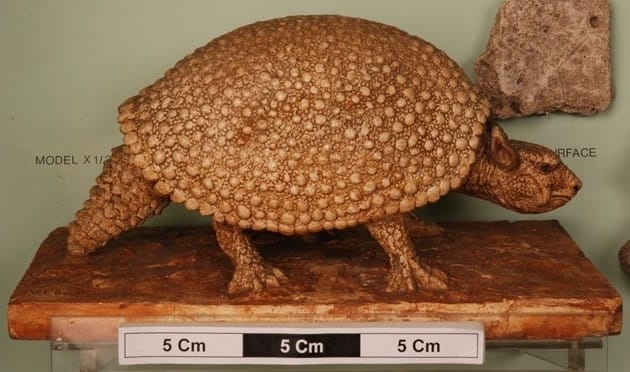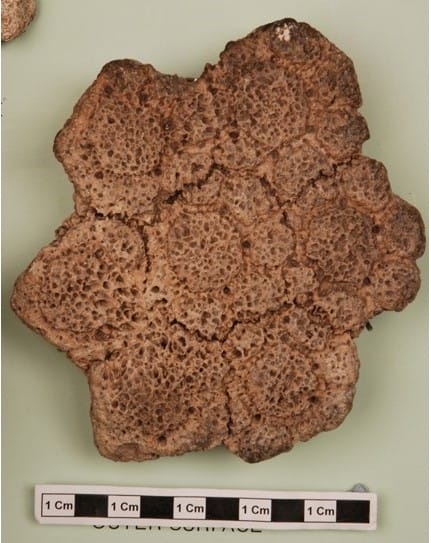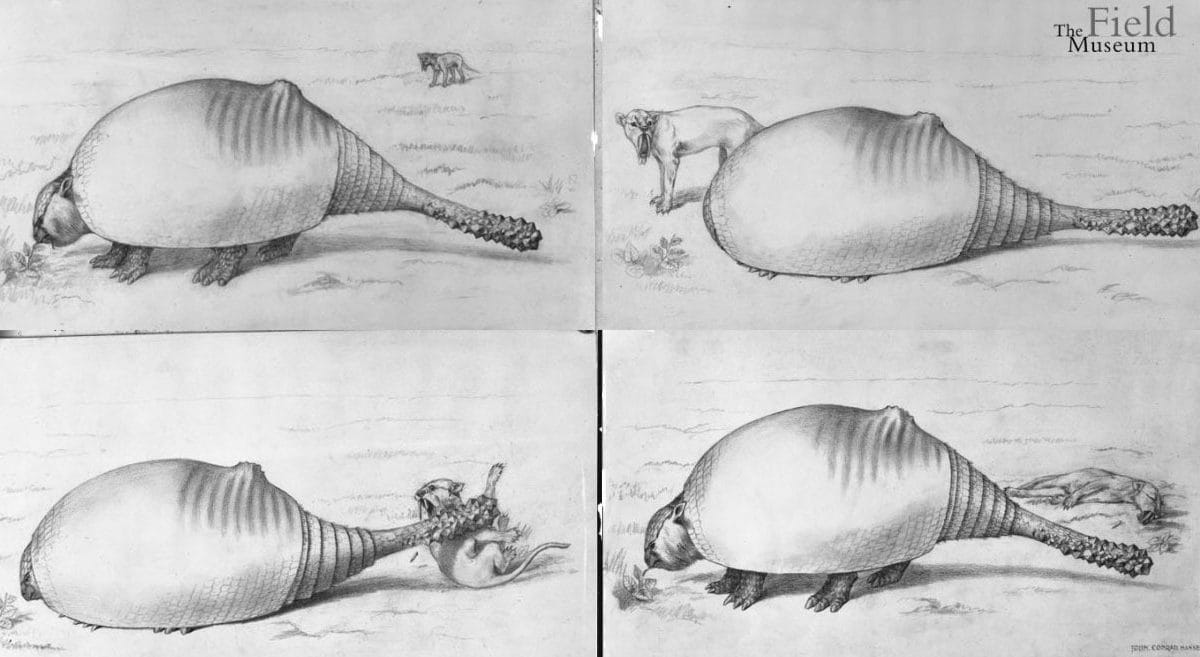A Glypto-What?
This beautiful model shows what a Glyptodon would have looked like, and is available to enthusiastic viewers in the Natural History Gallery. You’d be forgiven for assuming it was a huge great tortoise, but the hair gives it away as a mammal.
Early descriptions of Glyptodon were made by some of the most famous palaeontologists in history, including Richard Owen (who invented the word dinosaur, and was almost single-handedly responsible for the Natural History Museum in London) and Thomas Henry Huxley (who worked side-by-side with Charles Darwin and helped to spread the word of the theory of evolution).
But when these initial scientific descriptions were being recorded in the mid-1800s, the affinity of Glyptodon had many guises. Descriptions included ‘feet of a hippo’, ‘skull of a sloth’, ‘shell of an armadillo’, ‘teeth of a capybara’, and a more general statement that described Glyptodon as something between a rhinoceros and a giant ground sloth (Megatherium). I can’t see either of those myself but we have to remember early specimens weren’t complete and that the animated film Ice Age only came out in 2002. Glyptodon’s closest living relative is in fact the armadillo.

Perturbing Pesky Predators
In the mid-1800s a voyage to South America came back with two full boxes of bone fragments from a river deposit in Uruguay. These boxes were eventually emptied onto the desk of a curator at the Natural History Museum in Paris and took ‘four months of constant toil’ to piece back together. Once done however, the curator found her/himself looking at the huge shell of a Glyptodon.
The shell and bony coverings from elsewhere on the body could weigh up to 400 kg, which meant Glyptodons were lugging around a quarter of their body weight in armour plating.
There are those among us that find Medieval Role Play on a Sunday afternoon a great deal of fun, but for a wild animal the energy cost of wearing this suit of armour is too great for it to be for anything other than pure necessity. Voracious predators were indeed stalking around the underbrush during the Pleistocene and an un-armoured Glyptodon would have had its goose cooked before it could say, “Which way to the Amazon?”

Why Stop There?
In two of the largest Pleistocene species, a number of small gaps left by the traditional spread of Glyptodon shielding were protected by bonus armour plates. As these only appear on species that appeared later in the geological timeline, it is reasonable to suggest they’re adaptations to the evolution of larger carnivores than their predecessors had to contend with. Indeed, the largest land predators ever to have inhabited South America lived during this time. Poor Glyptodons.
A number of Glyptodon species have huge clubs at the tip of their tails, so some clever scientific bods decided to calculate the damage one could do. Apparently, an adult Glyptodon with a 40 kg tail club could smack into a predator at speeds of up 12 metres per second. In a fight with another Glyptodon, that blow had the power to shatter the armour of the adversary. My advice as a science professional? Don’t mess with a Glyptodon.

Slow But Steady
Most Glyptodon specimens have been found in Patagonia and Argentina. Despite its appearance as a lumbering cumbersome animal, the fossil record shows it managed to venture as far as North America on occasion. Presumably, Glyptodon managed this courtesy of the handy bridge of land that popped up in Panama during the Pleistocene. The same bridge of land in Panama that connects North America to South America in the modern day.


